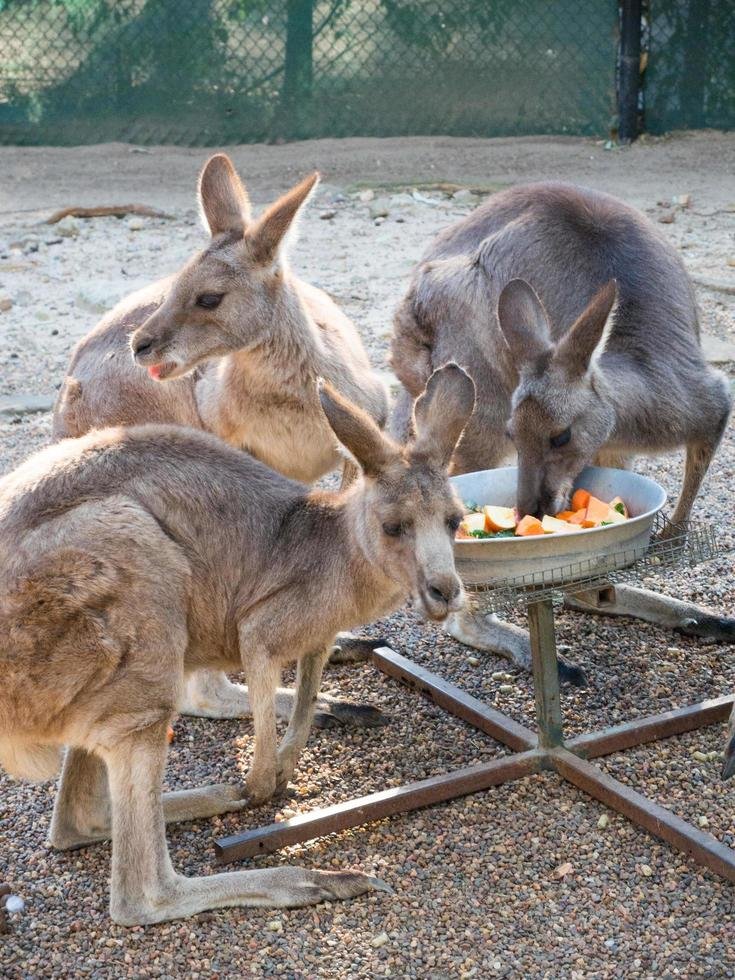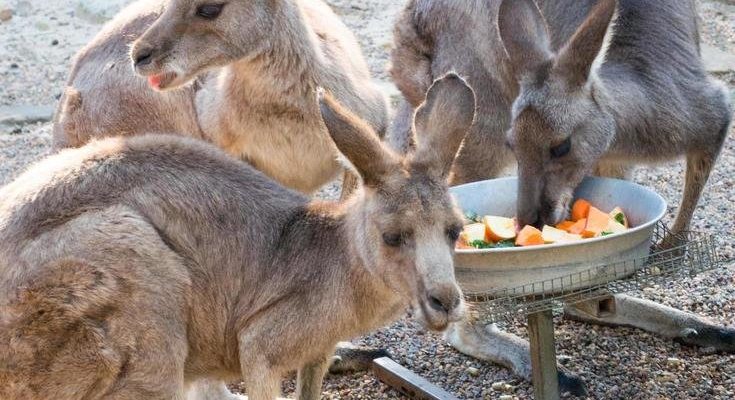
So, what do kangaroos eat? How do they hunt? Honestly, it’s a bit different than you might think. Kangaroos aren’t hunters in the traditional sense; rather, they are herbivores that carefully choose their meals based on what’s available. Let’s dig deeper into the world of kangaroos and explore how they feed themselves and navigate their environment.
Kangaroo Diet: What Do They Eat?
Kangaroos are primarily herbivores, meaning they eat plants. However, their diet isn’t just a random choice of leafy greens. These animals have evolved to be quite picky eaters, which helps them thrive in their natural habitats. They mainly consume:
- Grasses
- Leaves from shrubs and trees
- Fruits and flowers when available
- Herbs and seeds
Since kangaroos are browsers, they prefer to graze on soft, nutrient-rich grasses. You might be wondering why they focus on these types of plants. Well, it turns out that grasses are not only plentiful in the Australian outback but also provide the energy these animals need to hop around. Their unique digestive system allows them to break down the tough fibers of these plants efficiently, converting them into the energy necessary for their active lifestyle.
But here’s the thing: the availability of food can vary greatly throughout the year. During dry seasons, for example, kangaroos may need to travel further to find suitable food sources. They often adapt their diet based on seasonal changes, munching on whatever is available. This flexibility helps them survive in what can be a challenging environment.
How Do Kangaroos Forage for Food?
Kangaroos have a unique way of foraging that suits their environment. They are social animals and often forage in groups, known as mobs. This behavior not only makes finding food easier but also serves as a protective measure against predators. When they’re out grazing together, they can keep an eye out for potential threats.
Foraging usually takes place during the cooler times of the day, such as dawn or dusk. This not only helps them avoid the heat but also allows them to take advantage of the cooler temperatures to conserve water. You might think of kangaroos as having a built-in alarm system for food—when one kangaroo finds a good patch of grass, others quickly join in.
Interestingly, kangaroos can also consume a variety of plant materials that other animals might avoid. Their specialized teeth help them grind down tough grasses, while their digestive system ferments these materials, breaking them down for optimal nutrient absorption. They can even extract moisture from the greens they eat, reducing their need for water, especially in arid regions.
Predation and Defense: The Kangaroo’s Hunting Strategies
While kangaroos are not predators, they do have their own strategies for staying safe from animals that might want to eat them. Their main predators include dingoes and large birds of prey. To defend themselves, kangaroos rely on their strong legs and powerful kicks. A well-placed kick from a kangaroo can seriously deter a predator.
Additionally, kangaroos have keen senses that help them detect danger. Their large ears can pick up sounds from far away, giving them a heads-up when something’s not right. When they sense a threat, you might see them freeze momentarily before making a quick getaway. They can reach speeds of up to 30 miles per hour, allowing them to outrun many predators.
Another interesting aspect of their defense is their social structure. Being in a mob not only helps kangaroos find food, but it also increases their chances of survival. When one kangaroo spots a predator, it can alert the others, giving everyone a chance to escape. There’s strength in numbers, and this behavior is crucial for their survival.
The Role of Water in Kangaroo Diet and Survival
Water is a crucial element in the diet and overall survival of kangaroos. You might think they need to drink lots of water, especially considering the dry environments they often live in. Surprisingly, kangaroos have adapted to get most of their moisture from the food they eat, particularly during the lush, green months. This remarkable ability means they can go for long periods without directly drinking water.
During droughts or dry seasons, kangaroos might be seen digging for roots or chewing on dried grasses, which can still provide some hydration. It’s fascinating to think about how these animals have evolved to survive in such harsh conditions. When water is available, they will drink when they can, but their efficient use of resources allows them to thrive even when things get tough.
Interestingly, when they do drink, they often do it in small gulps rather than large swallows. This behavior helps them maintain balance in their bodies and avoid dehydration, especially on hot days. You could say that kangaroos have become pros at maximizing every drop of water they consume.
Adaptations: How Kangaroos Thrive in Diverse Environments
Kangaroos are a great example of how animals adapt to their environments. Depending on where they live, their hunting strategies and dietary preferences may shift. In coastal areas, for instance, kangaroos might munch on different types of vegetation compared to those living inland.
Their ability to adapt is also evident in their physical features. For example, some kangaroo species have longer legs or different body shapes that suit their specific habitats. This is essential for their mobility and helps them escape predators or find food more easily.
Let’s not forget about their fur. It serves multiple purposes—from providing insulation to camouflaging them in their surroundings. Depending on the environment, a kangaroo’s fur color may change slightly to help them blend in, making them less visible to predators and humans alike. It’s like wearing the perfect outfit for every occasion!
The Impacts of Human Activity on Kangaroo Diet and Behavior
Unfortunately, humans have a significant impact on kangaroo diets and hunting strategies. Land development, agriculture, and urbanization encroach on their natural habitats, reducing the availability of food sources. Without ample grazing lands, kangaroos must adjust their foraging behavior, sometimes leading them closer to human settlements in search of food.
This change can create conflicts between kangaroos and humans. As kangaroos venture into populated areas looking for food, they can become a nuisance, leading to negative encounters. It’s important for us to understand their natural behaviors and find ways to coexist with these incredible animals.
Additionally, climate change is affecting kangaroo populations and their access to food and water. As the environment shifts, their natural habitats may become less suitable for foraging. We must consider these changes and think about ways we can protect and support kangaroo populations to ensure they continue to thrive in the future.
Kangaroos are fascinating creatures with unique diets and survival strategies that are finely tuned to their environment. Understanding their foraging habits, their adaptations for survival, and the impacts of human activity helps us appreciate these remarkable animals even more. The next time you hear about kangaroos, think about their incredible ability to find food, stay safe, and adapt to changing conditions.
As we continue to learn more about kangaroo diets and hunting strategies, we can foster a better relationship with these animals—and perhaps even find ways to protect their habitats for generations to come. Remember, there’s a lot more to kangaroos than just their iconic hops; they are truly a testament to nature’s ingenuity!

